The Ostrich
Has Landed:
An Update for
Visitors to
Teesside Airport
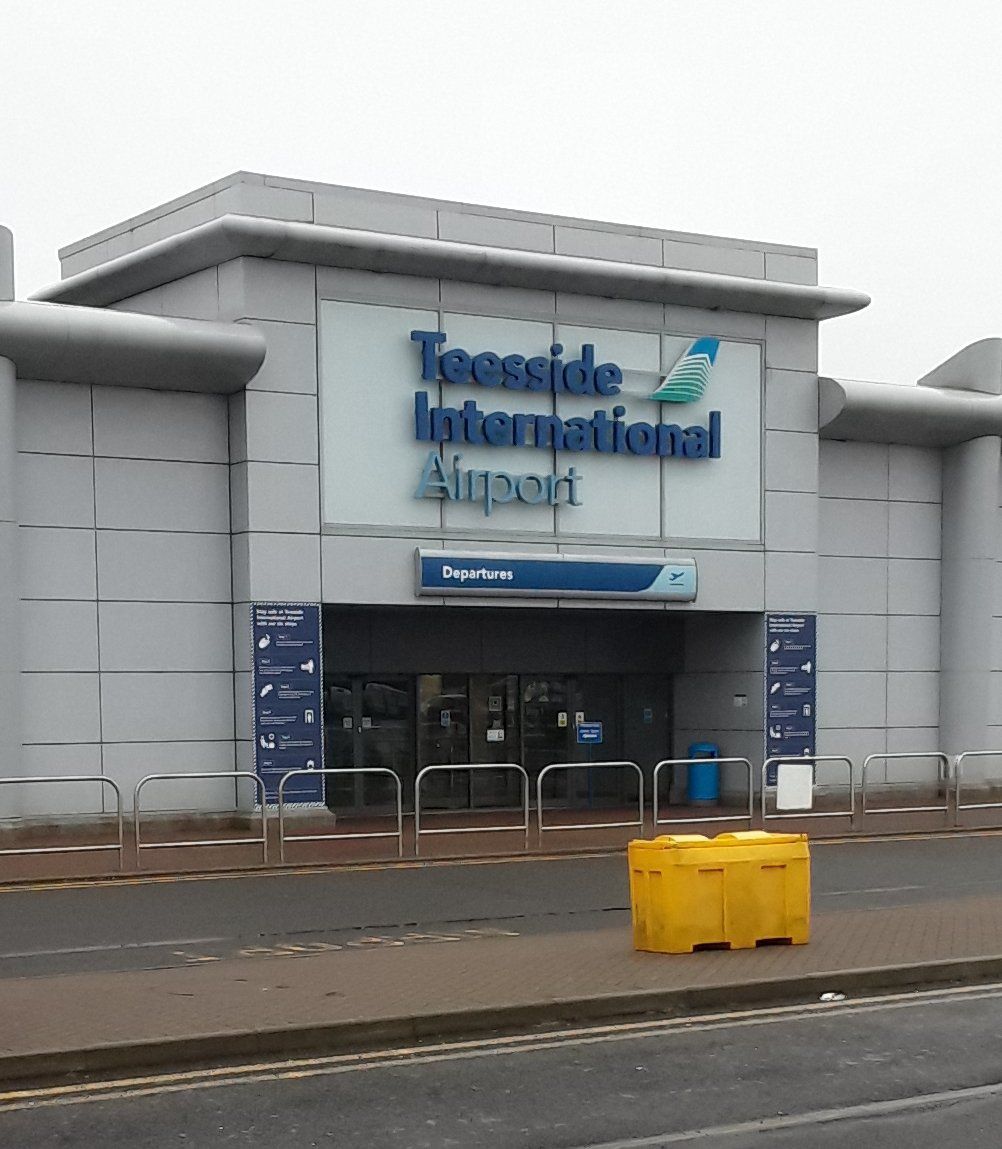
Scott Hunter
27 July 2022
Teesside Airport has been making headlines in the local press in recent weeks, but not in a good way. The latest is the revelation in the Gazette that the TVCA is to put up £20 million to cover the losses of £11.7 million incurred by the airport in the last financial year. A couple of weeks earlier it was the news that ‘vandals’ had entered the airfield site and done £200,000 worth of damage to a ‘retired’ aircraft. Prior to that, from 11 June onwards, was the tale of the Teesside Air Show, where the press reported firstly the traffic chaos that occurred on the day, followed by the scramble to lay the blame on anyone but the airport company.
The Air Show fiasco has generated a lot of comment in the weeks since. A few people have wondered why visitors were not directed on to trains to bring them to the site, given that there is a rail halt on the airport’s perimeter, and this may have alleviated traffic chaos so severe that some ticket holders didn’t make it to the show at all.
In reality, the rail halt has been closed by Network Rail. But the idea set us thinking. Thinking about what visitors would have seen had they arrived at that part of the airport site. In the process, we may get some insight into what the airport company is spending money on that explains the need for the TVCA to award it not just the £11.7 million to cover its recent losses, but an additional £8.3 million for reasons undisclosed by the TVCA.
Here is the first instalment of our guided tour.
The End of the Runway and Beyond
Step off the train and there is a sort of roundabout in front of you with one road leading from it. Follow that road. To your left is the end of the runway and Taxiway Alpha. Taxiway Alpha is notable firstly because of its size – it’s large enough to take a light aircraft, nothing more. And secondly because it leads to the airport’s new air freight handling facility.
Beyond the runway is the land that is to become the access to Teesside Airport South Side Business Park, a 50-50 joint venture set up in February 2020 between the airport company (TIAL) and a company called Teesside International Land Ltd, owned by Martin Corney and Chris Musgrave, the same two people who now own 90% of Teesworks Limited.
In order to kick start the project, the TVCA awarded it £23.6 million, ostensibly to build the necessary infrastructure for the site.
Wildlife Habitat
That there should be a wildlife habitat at an airport may come as something of a surprise, but the site is vast and has been underused for some time. So, in places, the weeds and the wildlife and moved in. The wildlife that turned up included great crested newts, that are notionally, at least, a protected species. It is to your right as you leave the rail halt.
That habitat is now much smaller than it used to be, because a whole lot of waste material was recently dumped on it by contractors for the airport. Darlington Borough Council and the Environment Agency inspected the site but found no evidence of wrongdoing. They didn’t mention the fate of the protected species when stating their conclusions. Neither did they appear to notice that there are large areas of vacant ground in the vicinity that are not habitat that might have done just as well to dump stuff on.



Before After Great crested newt on the site
A Spike in the Cost of Electricity
Look further to your right, beyond the bulldozed wildlife habitat, and you’ll see some of the businesses that occupy the north side business park. Some of these have been on this site for decades. Others have left recently. For some, the final straw came in March, when the airport company, which supplies their electricity, raised the price by 300%. But these are only the latest. Others had already gone, and the suspicion lingers that the airport company actually wanted them off the site and encouraged them to leave. Given that these businesses are a revenue stream for an enterprise that is haemorrhaging public, money we might have expected expect them to be a little more conciliatory.
A New Multimillion-pound Freight Cargo Facility Has Been Established
It was at the beginning of 2022 that reports first emerged of the creation of an air freight facility. A couple of things about it seemed odd, however. First of all, the facility never attracted newspaper coverage of its own. Given that it was ‘multimillion-pound’ we might have expected a bit more coverage than it actually got. Here’s how the Gazette described it in February this year:
“As part of a wider programme of development at the airport, and as part of a ten-year business plan, a new multimillion-pound freight cargo facility has been established.
The new facility boasts the latest in screening technology and offers daily services for freight movements as well as supporting ad-hoc charters for specialised cargo.”
Also, given his willingness to be photographed in front of airport developments, it comes as a surprise that Houchen had not been snapped smiling in front of the new facility. Until you see it, that is. Then all becomes clear.
Of the various hangars around the North side of the airport, the one nearest the rail halt stands out. It stands out because it looks as if it might collapse at any moment, it is in such a dilapidated state. Made of rusty corrugated sheeting on the outside, it is divided into two unequal halves on the inside. The larger of these once housed the light aircraft that belonged to the members of the private flying club. They were evicted last year and have now moved out of the airport altogether. When we asked them about it, they said it was as dilapidated on the inside as it was on the outside. It had no facilities. When it rained, not only did the roof leak, but you couldn’t hear yourself speak.
It is this hangar that houses the air freight facility. Now, as well as ‘the latest in screening technology’ the freight facility boasts a new roof, which, we have been assured, is insulated. It also sports two new roller doors and some very expensive-looking concrete barriers. This is perhaps what airport managing director, Phil Forster, was referring to when, in a recent article (22 June) in International Airport Review, he described it as ‘purpose-built’.
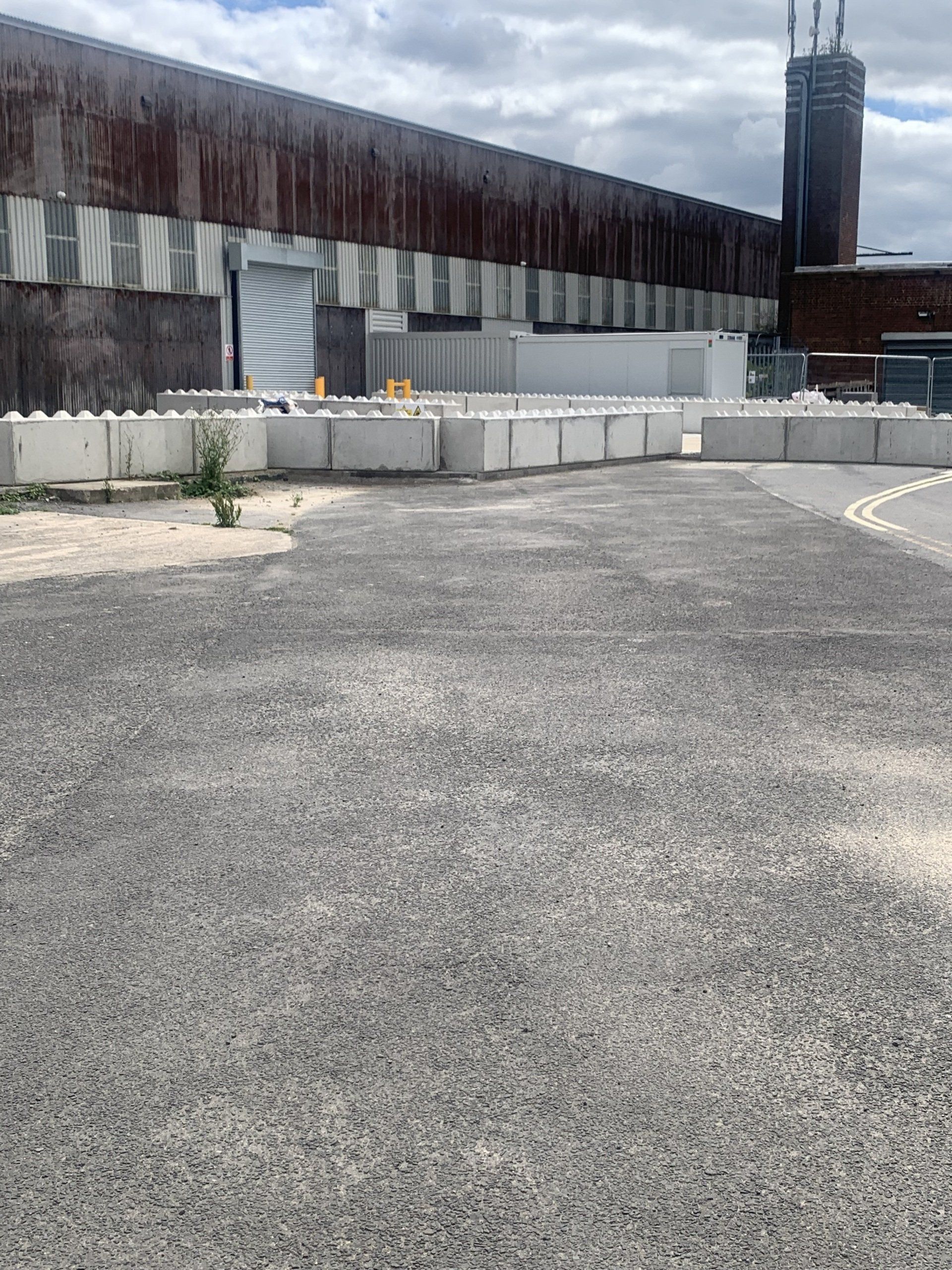
Teesside Airport multi-million pound air freight facility
And, contrary to the assertion made in the Gazette, it is closed. In fact, it has never actually opened. So, when Phil Forster claims that the airport has recently acquired “Regulated Agent status to help us become a premier cargo handling facility”, it doesn’t actually seem to have made any difference.
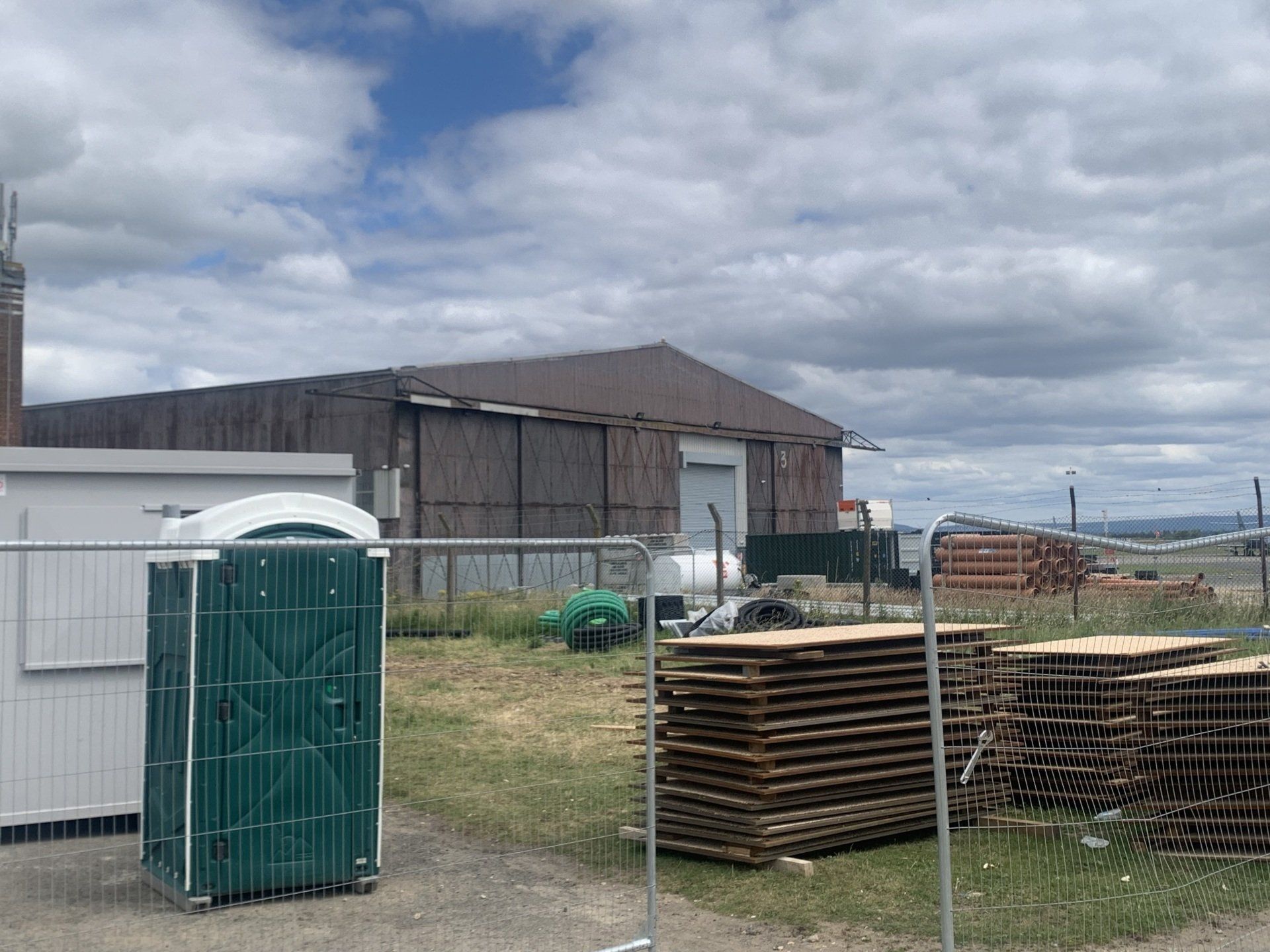
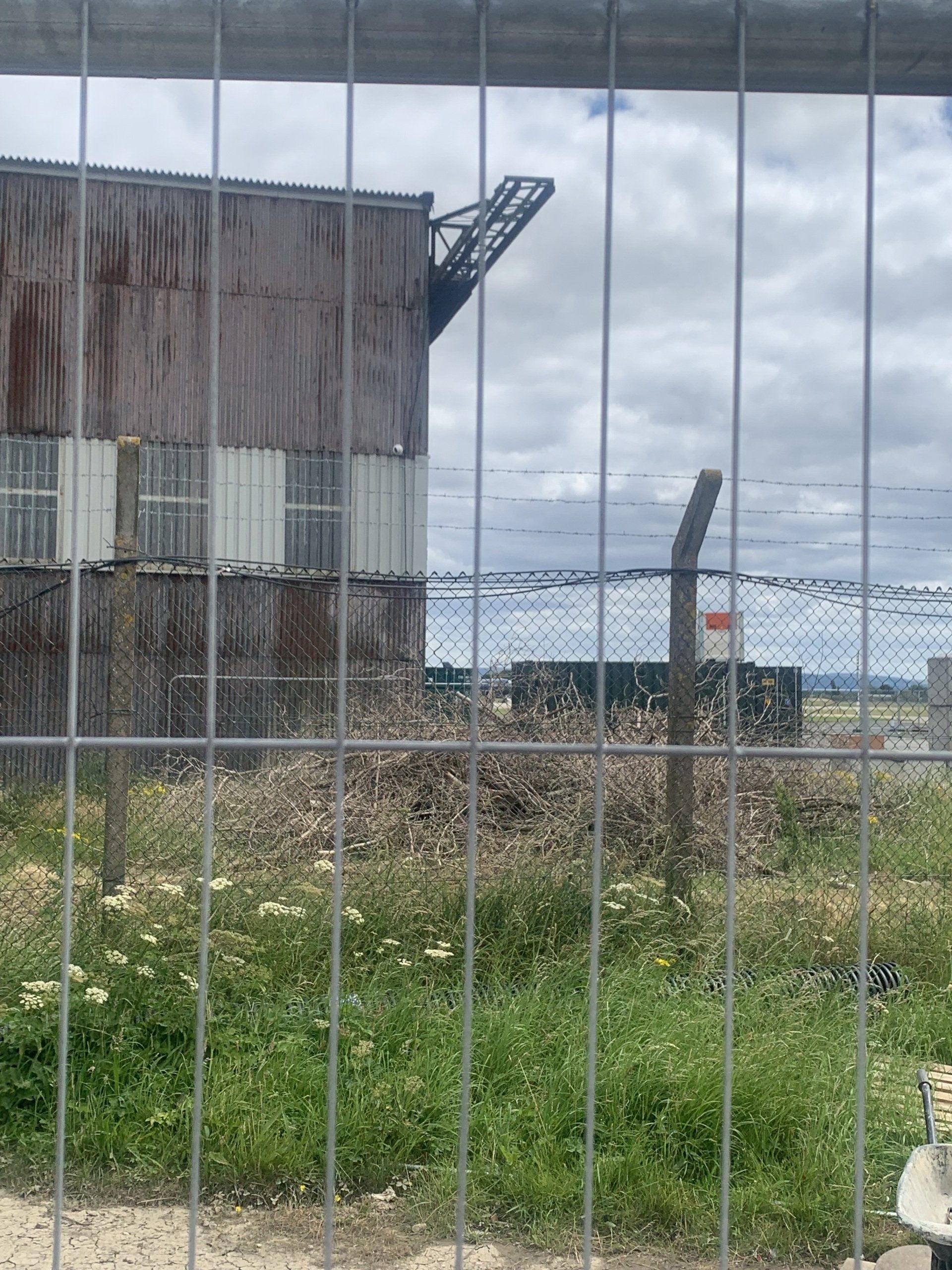
Teesside Airport multi-million pound freight facility
As you look at what has been clamped on to its rusting hulk to make it the “purpose-built, multi-million-pound facility” that Forster claims it to be, one thing is crystal clear, however: there’s certainly been a lot of money spent. Perhaps that goes some way to explaining what the airport company might need the extra £8.3 million for.
The International Airport Review article also shows that Forster is not shy about the use of smoke and mirrors to get his point across. The article contains two images -one is an image of a cargo plane on the tarmac, with cargo beside it. But the image isn’t actually of Teesside Airport. It’s a stock photo that’s been in circulation for at least nine years. It’s mostly used by air freight companies on their websites. Forster’s article is the only one we have found where it’s used to fake activity by an airport company.
Then there’s this photo:
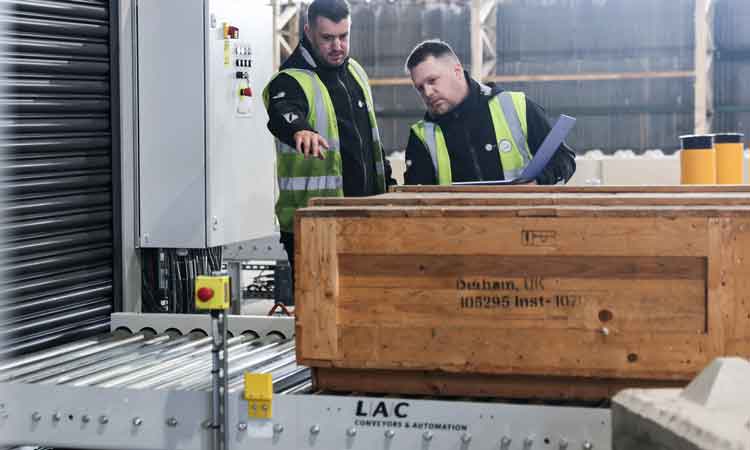
Teesside airport multi-million air freight facility
Now, given that the freight facility has never opened, it’s unclear what this pair were doing in there. But is this really the inside of the hangar? Well, it’s a possibility. Behind the two men the metal framework of the structure is visible as is the metal sheeting covering the building. No sign of insulation on that bit, however, which perhaps explains why, if the photo was taken early in the year, the two of them are wearing fleeces. What it is that the two of them are looking so intently at, however, is anybody’s guess.
But Forster’s intention is clear. He wants to explain to the industry that Teesside airport is developing its estate, as it needs this in order for the airport venture as a whole to become commercially viable. To that end, he describes how they are ‘kick-starting’ plans “to establish a 3.4 million square foot, £200 million business park on 270 acres of land on the south side of our runway”. The first phase, he says, is already underway.
Teesside International Airport Business Park
The new airport business park certainly is underway. To a certain extent. By February this year, Teesside International Airport Business Park Ltd, a joint venture between the airport company and developers Corney and Musgrave, had succeeded in erecting two rows of wooden fence posts, presumably marking out the path of the access road. It seems that the developers haven’t had much time to work on the site, as they have been busy developing Teesworks, of which they now own 90%. This, it has to be said, is unfortunate.
Corney and Musgrave are busying themselves around Teesworks, it appears, because there is a tight schedule there for getting things ready. Ready, that is, for the freeport.
South Tees Development Corporation papers from August 2021 (obtained through FOI) show that this was the point in time when board members were asked to allow an additional 40% share of Teesworks to be transferred to Corney and Musgrave, resulting in their having 90% of the shareholding. The rationale for this was that the acquisition of freeport status meant that the project would have to be ready for leaseholders much earlier than previously anticipated:
“The proposals for advancing transition of future responsibilities to the private sector requires a transfer of significant risk and rewards to incentivise the required pace of delivery to maximise the Freeport tax and customs benefits within a five year time period.”
The problem is that the same ‘pace of delivery’ is required at the new airport business park because it is part of the same freeport as Teesworks. Now one year of that ‘five year time period’ has lapsed with precious little progress made on the site, and no big announcements from Houchen about who is going to set up shop there. There has been occasional muttering about the possibility of the Treasury moving in there instead of creating a base in Darlington. That might fill up a bit of space, but is hardly a ringing endorsement of the freeport concept.
At the time of our visit in February, the site was deserted. While there was no sign of development other than the two rows of fence posts, there was a digger on this access road of the future, with the letters TCC painted on the side. That ‘TCC’ is the logo of a company called TCC Plant Ltd. TCC Plant Ltd has two directors – Chester Corney and Tom Carr. The familiar surname is no coincidence. Chester Corney is son of Martin Corney, and, in fact, Tom Carr is also family; we are led to believe that he is Martin Corney’s son-in-law. All of which means that, here at least, Tees Valley mayor Ben Houchen’s pledge to use local firms to work on the redevelopment of the airport has been fulfilled. Even if progress on the site is a little less than encouraging.
